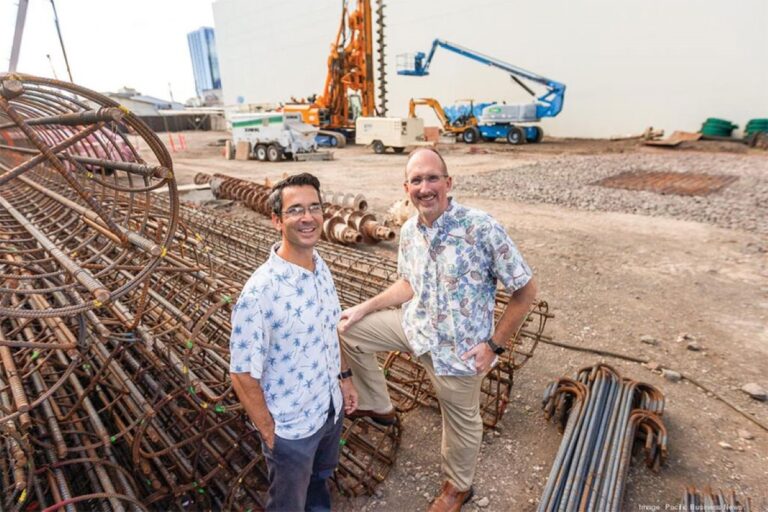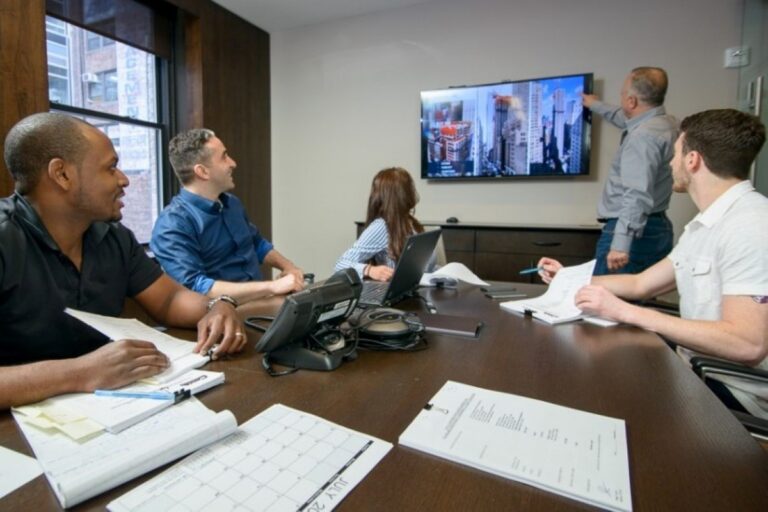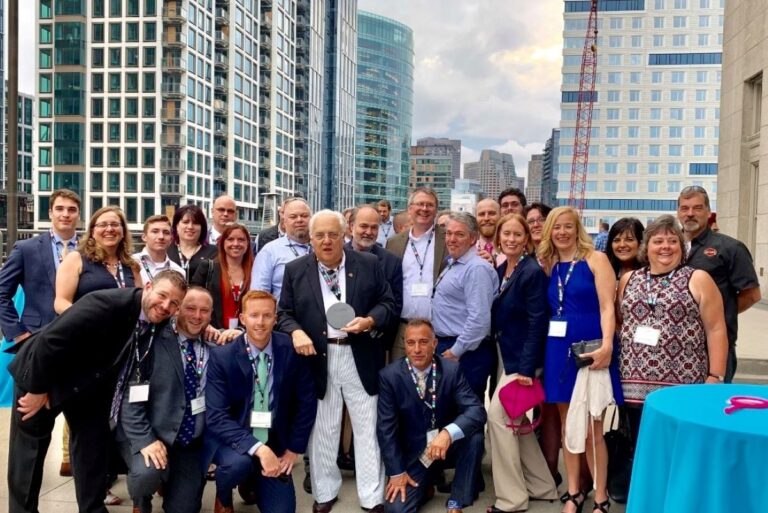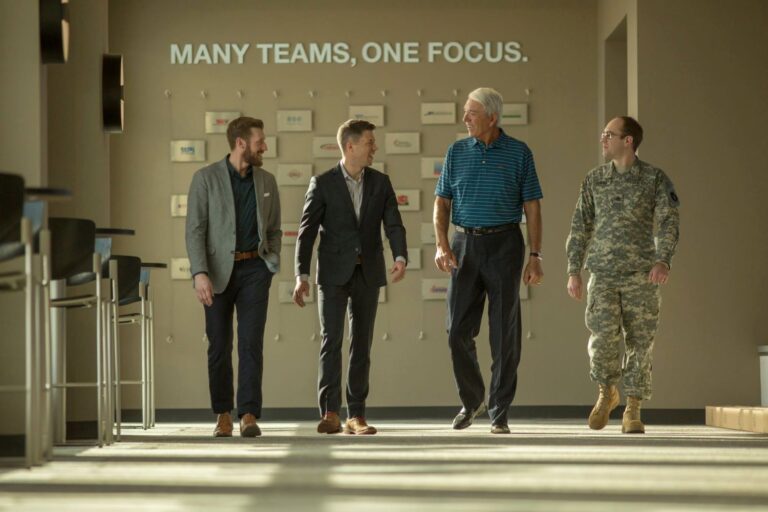Commercial Real Estate Investment: The Story behind an Ex-Goldman Sachs Executive
Commercial real estate investment is considered to be any real estate that can produce outside revenue or income for you as an investor in that property. This can include a vacant lot or tract of land on which you intend to construct a building to rent out, or land that can itself be leased to a user and thereby produce income. All real estate that is not solely used as your residence can become commercial. If it produces rental income or is a part of your business, then it is commercial real estate.
For investors, the property has been something of a puzzle. Against its large share of national wealth, the representation of the property in multiasset portfolios is not only low but has fallen to one-third of what it was 20 years ago. On the available evidence (its accuracy, in turn, a subject of debate), property’s risk and return history refuses to fit neatly into the framework of modern portfolio theory through which investors view the world. Still worse, through much of the last 20 years property has failed to meet, either in absolute terms or relative to alternative investments, the simple return thresholds investors need to beat.
And, in an era obsessed with the globalization and transparency of investment, property markets are still heavily divided by national differences in the statute, regulation, and culture; accurate international comparisons are at best expensive, at worst impossible to come by. Property has, indeed, looked in danger of becoming an afterthought in the asset allocations of major investors.

Sal Buscemi is Managing Director at Dandrew Partners, a market leader in short-term loans and equity financing. He mentors aspiring fund managers through The Commercial Investor, a division of Dandrew that teaches wealth creation through real estate the Wall Street way. Sal started his career as an investment banker with Goldman Sachs before transitioning to real estate, and to date, he has raised a total of $500M in the capital for other people’s projects as well as his own. He is also a sought-after speaker in the realm of real estate finance and has written countless articles on residential and commercial investing. With his point of view, you will find the right ways to dig into commercial real estate.
Building True Relationships
And now everybody sees billions and it’s all super glamorized and everything, which is great. Sal started there and he built networks and have known each other for a while. There are networks, he has great networks in New York and a good reputation too with being a good asset allocator for these families putting them into these deals. Clients are looking for the best possible deals they can risk-adjusted, meaning they’re not looking for a 10 or 12 because they know there’s going to be a lot of risk with it, but they just want something that they don’t have to worry about for the next seven years, maybe in the next 14 years. And that’s the way he engineers these deals.
According to Sal, this market is trust fund money, this is what wealthy people invest in. Capital today is more of a commodity and you have to treat it promptly. There’s a lot of people who have money out there and it’s looking for space, but you have to know where to find the right deals to get into and that requires as you know networking. The way you build relationships with high-net-worth individuals who have the resources to invest in your real estate deals is very important. By treating them like friends, not ATMs.
“I’ll tell you the smartest thing I ever did, I like to get onto charities, boards where there’s a lot of board wealthy people and that’s how you’re able to build prominence and influence, it’s becoming like someone, I would go to meetings, we have people I know who they’ll go to affiliation type thing. So if you are, say, Chinese American or something like that, you want to hang around those people, you the affinity’s help. If you’re of one demographic, one religion, or something, that’s something to start. But I like to start, I started by doing this by sitting on the board of managers of the Chinatown YMCA in New York because I was there originally to find a bride because I networked with “the president of the New York Stock Exchange at the time, who told me to call Paula.” – Said Sal.
Always talk to people, you don’t have to know your deals, you just have to know and talk to people. You just have to talk to people. You’re going to have to know some stuff and everything. But when you first start talking to people, and remember if you’re raising capital, you put that money into other people’s deals who are smarter and more experienced than you, and you won’t get hurt and that’s how you build a track record, don’t try to be the hero who’s going to go out there and do all this stuff yourself and rehabilitate 200 units because you will die, your wife will hate you, I’ve seen this happened before. It’s like, they’re in this deal. They’re not spending time with their wives. They’re managing it themselves because they overpaid for it.
3 Rules for Choosing Operators
Rule #1: Audit track record
You need to see if the operator’s doing any of this stuff that they have an audited track record if their track record is so good, why didn’t you pay someone to audit it and you want to be able to see that? A lot of people don’t do that right now. A real development management company is going to have that.
Rule #2: Two markets cycles
Number two, and this is something that a lot of people get rubbed the wrong way, make sure that they’ve been through these operators and developers had been through at least two cycles. So that means 1999 and 2008. 2008 was just Darwinism for financially stupid people, right? I mean when I was out here, Jim coaches in San Diego, we’re buying sight unseen three investment properties in Las Vegas and they were paying nothing for it. They were not using any of their money. They were getting 105% loan to value, loans back, and that all just wiped out.
Rule #3: At least 10% hard equity in the game
We want to make sure that we have people who are working with these developers that have at least 10% hard equity in the game. That’s not market equity-like, I bought it for this and now it’s worth this. No, that means they’re putting their money into it and I want to make sure that they do not sort of pinching between the pillows and the couch to make sure that they can actually, that they’re well-funded. I think a lot of people, especially in what we call value-added deals, rehab deals, they get into it, there are expense overruns, they don’t know what they’re doing, they overpaid for it, they’re over-levered.
And that’s where the problems come in. When you pay attention to those three rules, you can sort of going to bed at night figuring, “Okay, there’s a good chance I’m not going to lose anything, because you’re working with the best in class that you can find and of course there are all sorts of other background checks and things that you do with that.” But going forward, once you get to that part, then you have something to work with and that’s something that you might want to look at as far as channeling energy, direction, time and resources, and co-investing.
“If you are working again with the three rules that I talked about, competent, operators who’ve done this, who’ve been through this before, had all their properties like this” – Sal said to emphasize the importance of these rules.
3 Must-Have Components in Your Investment Analysis Plan
#1: Understand the Cap Rate and Market Landscape
Cap Rate is the ratio between the net operating income produced by an asset and its capital cost (the original price paid to buy the asset) or its current market value. Make sure that you’re getting in at a cap rate that you’d be able to get out of.
Commercial real estate valuation is a very complex business with many variables that affect the price. Over the years, investors found that they needed a way to compare property values, essentially price, in a market using a shorthand method, thus capitalization rates or cap rates came into general use. In simple terms, a cap rate is what investors expect to earn as a percentage of their investment on an annual basis. For example, a property with a cap rate of 10 tells a buyer that he should expect a 10% return on his investment assuming a debt-free transaction.
In general, the lower the cap rate, the higher the property’s value, and the higher the cap rate, the lower the value. In other words, a property with a lower cap rate compared to a property with a higher cap rate will return less income to the investor.

#2: Assess and Evaluate the Assets Properly
You always need to know how you’re valuing these assets before you get into it. That’s the first thing because even the best operators in the world are not able sometimes to get out of an over-leveraged, overpaid property. And that’s where you’re going to feel a lot of problems happen today in commercials especially multi-family, especially in C class, what we call, and this is I know I’m going to get a lot of hate on this, but it’s going to be a lot of the class C stuff that people bought it a five and a half cap. And we can get into the value-added stuff in a second, but this is what’s going to happen and that’s going to be an issue where the smaller balance stuff says between 10 million and less. People overpaid.
#3: Rental Income and Other Cost Factors
The problem with this is that what drives the value of commercial is rental income, nothing else. According to Sal, a lot of reasons why people like and they gravitate towards something like this is because they know that the consumer’s already tapped out, right? So if you look at it from an economic standpoint, me being from New York City, living in New York, renting in New York, owning in New York, you spend about 50% of your after-tax salary on housing. The rest you spend on shoes, food, and lifestyle. And once that becomes more than 50%, you can hike it anymore because now it’s like, “Well you know what? Screw this, I’m going to go across the street because that guy is going to give me economic incentives. He also has a nicer two and a half horsepower whirlpool bath for my wife, he’s got a front desk, a newly paved parking lot and I can get in there for $100 a month cheaper. So I’m just going to move out.”
And that’s what you’re going to see is, you know, some sort of migration I think when weak people, inexperienced operators think that they can just go in there and hike the rents, that’s never been something. Also the expense ratios on something like this much lower and multi-family, it’s 45% to 50% if you know what you’re doing. Because these things are really, the tenant improvements are already been put in that, they do it themselves for the most part. So they come in, Milwaukee tool knows what they want, there might be some TNI but they’re there for the seven years so you’re recapturing it back. But it’s also sort of like at the time now where if they’re coming in at this point, they’re probably going to be here forever. And that’s a good thing for us. So the expenses are, you’re not too worried about, there are no toilets here, there’s no air conditioner we know that very well, but there’s no heating for each unit that you’re responsible for because your tenants don’t care to shut the windows and things are going on. There’s just a lot of inefficiencies with multi-family that you don’t get in other asset classes.
Communication Is Key in Building and Maintaining Investor Relations

Tony Robbins has a great theory on this that I’ve read and it goes like this. It goes, “People will gravitate towards people who are like them or who they want to be.” And you always have to think about that when you’re working with investors, your investors, all they care about is you having a relationship with them
The worst thing, besides attracting any deal flow, is if you only receive application out-of-scope. Every application should be looked into and answered individually, as this will influence your reputation in the community, but you do not want to waste your time and concentrate on time for the right companies, right? The best way to attract a better fit of applications is to publish your investment scope and strategy, where you explain:
- How much do you invest?
- How many investments are you willing to make per year?
- Investment strategy (industry, stages, regions)
- What type of investor are you? (hands-on, co-invest (syndicator), financial investor …)
- Investment process: hard criteria and soft criteria
- Average response time
- Current portfolio & track record
Don’t forget to explain who you are and why businesses should work with you. Besides the smartness of money – driven by your personal experience, skills, network, and such – synergies to other portfolio companies may be highly valuable. There are multiple ways to publish your investment scope and investors’ profile. One good starting point is the website of your investment company if you have enough resources to attract significant traffic.
The key is to qualify the right investor, just as you would do when qualifying leads. Raising capital is not an easy process, but it can be rewarding if you do your best to prepare yourself before walking into a meeting. Know your information, so that you can execute the goal in mind — receiving funding.
Personal connections are very important, probably even the secret to most successful investors. If you consider building a portfolio, you will always need to partner up with other investors to leverage your skills and to diversify your financial risk – and this is the same for all professional investors, therefore they are usually open to talking about co-investments and collaboration on deals. It is smart you surround yourself with top-investors and maintain these relations with heart.
There are many ways to engage and widen your networks. One way is to become a member and attend meetings of local angel groups. Be aware that there are several different ways these groups work. Some charge member fees (smaller and higher), others take a success fee at closing of promoted deals and participated in terms of carried interest and others are free to foster angel investments within a region.
The Bottom Lines
Once you know what your potential investor is looking for, position your business to meet their expectations. The information above can help you grow your business. The single most important tool for accomplishing this is your business plan. A well-prepared business plan will show potential investors that you are serious, that you have carefully and thoroughly explored the opportunities and risks in your market, and that you have strategies in place to respond to them.









